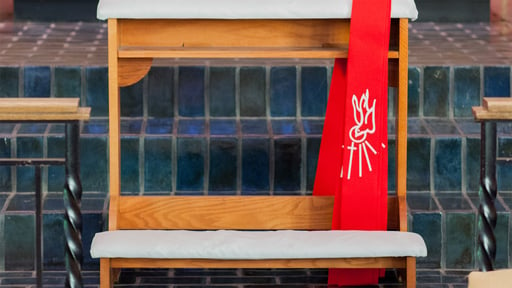The Epistle is the focus of our devotion today. The devotional text is from Concordia Commentary: Ephesians.
Scripture Readings
Jeremiah 23:1–6
Psalm 23
Ephesians 2:11–22
Mark 6:30–44
Read the propers for today in Lutheran Service Builder.
Devotional Reading
It is not simply that in Christ the Gentiles are finally incorporated en masse into the nation of Israel. But, Paul argues, Christ died that “he might create the two into one new man” (2:15)—not incorporating one group into the other, but creating a new man. He died that he “might reconcile both in one body to God through the cross” (2:16)—not as if only the Gentiles needed reconciliation, but to reconcile both to God. When Christ came, “he preached peace to you who were far off and peace to those who were near” (2:17)—not peace only to those who were far off, but peace to both. . . .
The result is not the enlargement of the old Israel (according to the flesh), but the creation of a new Israel (in the Spirit). Certainly, the faithful remnant of Israel (including Paul himself!) marks a continuity between the two entities. But in the present address to Gentiles, Paul shows no interest in the question of what happens to the unbelieving majority of Israel according to the flesh (i.e., those outside Christ). This is not to suggest that God’s promises to Israel of old are null and void. Her advantages were many (Rom 3:1–2; 9:4–5). It was from those great privileges and gifts that the Gentiles were formerly estranged. But there is a subtle shift in Paul’s argument here that greatly parallels Romans 9–11. Once the Gentiles were estranged from Israel (in the flesh); now they are incorporated into Israel (in the Spirit). In a sense, it is the very shift from flesh to Spirit that facilitates the incorporation of the Gentiles into “the Israel of God” (Gal 6:16). The temple itself becomes the obvious vehicle for illustrating this shift. The OT prophecies that spoke of all nations streaming to Mount Zion to worship the true God were understood literally by most Jews (and by modern-day Jewish and Christian Zionists). But in line with our Lord’s prophecies concerning the destruction of that earthly temple, Paul sees the fulfillment in a new and greater temple. On the one hand, it is simply the physical body of Jesus Christ himself, which was torn down in death and rebuilt in resurrection (Jn 2:19–21). But as Paul has asserted that the church herself is the body of Christ (Eph 1:23), so, too, he sees the new temple as a construction of Christ’s members.
Devotional reading is from Concordia Commentary: Ephesians, pages 348–50 © 2015 Concordia Publishing House. All rights reserved.








.jpg?width=50&height=50&name=IMG_20220621_160541_456%20(1).jpg)




